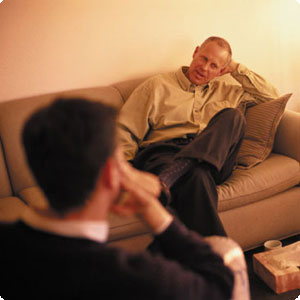Combination Treatment Most Effective for OCD

Professors like Meredith Coles at Binghamton University have a new tool to eliminate obsessive-compulsive disorder, also called OCD. Several clinical trials show that a specific type of talk therapy, combined with antidepressant drug treatment, is effective in treating OCD. In particular the selective serotonin reuptake inhibitors or SSRIs have been effective when combined with therapy.
Professor Coles points out that many types of anxiety are useful. Fearing a flat tie on a dark road may lead patients to main their autos and drive more safely. Sometimes, however, the fear spirals out of control. That is the issue Dr. Coles and her colleagues address at the Binghampton Anxiety Clinic. Her recent study shows that many people with OCD fail to seek treatment, because they believe they can cope without it. However, untreated, the condition tends to become worse over time.
Exposure and response prevention (ERP) is a type of cognitive-behavioral therapy that has proven effective for OCD in clinical trials and private practice. Therapists trained in ERP gradually guide patients with the disorder into exposure to the situation they fear the most. As the patient gradually becomes more comfortable, they increase exposure until they can function without undue limitations.
In ERP therapy, a patient with agoraphobia may be afraid to leave her home. The therapist might walk her through opening the door to look out, as a first step. Once the patient can tolerate looking outside, she might be prompted to put one foot outside the door, before going back inside. Exposure is increased gradually until the patient can leave the home on her own.
OCD causes repetitive or non-productive behaviors in response to recurring thoughts or fears about unpleasant results. A mother might fear that if she puts an orange instead of a banana in her son’s lunch, he could be injured or fall sick. A man may fear that if he does not sanitize the bathroom doorknob many times per day, he will catch a deadly disease.
Many patients with OCD are extremely imaginative and creative. In a sense, they are being held hostage by their own minds, which conjure up endless vistas of hazards. Even in cases where the patient knows that their fears are unrealistic or even silly, they cannot let go of the repetitive behaviors.
OCD behaviors like constantly checking the oven to make sure it is off allow patients to create the semblance of control in a chaotic universe. One of the therapist’s major goals is to help the patient realize that many things are out of their control – and that’s okay.
OCD appears to have a genetic component, and runs in families. About one in 40 adults and one in 200 children suffer from OCD.
By Joni Holderman, [email protected], contributing reporter for Mental Health News.